Mad River & NKP Railroad Museum
Mad River & NKP Railroad Museum


The Sandusky Replica

This is one of the engines you can go into.
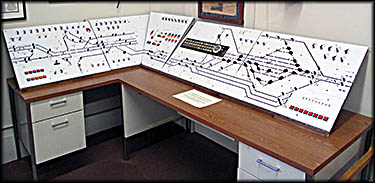
Control Panel

The author remembers seeing this locomotive cross Route 20 in Bellevue. In 1976 it was painted with red, white and blue to celebrate the Bicentennial.
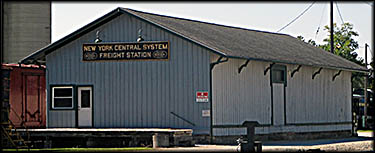
This freight station is now an office.
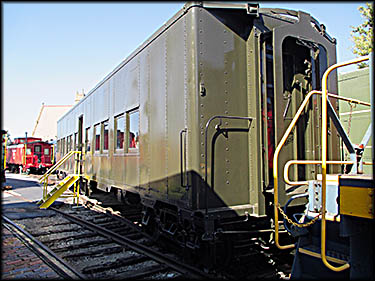
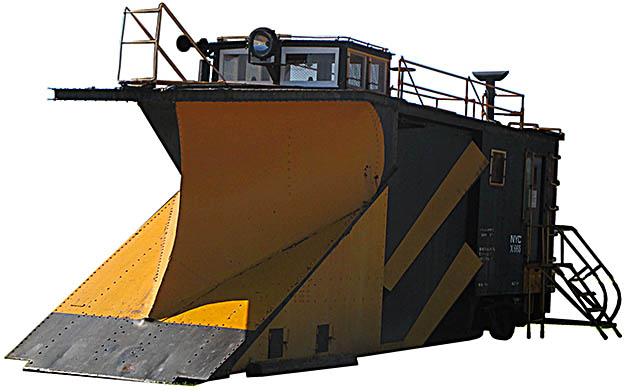
Troop Sleeper No. 7407. This is a Pullman car built between 1943 and 1916 to transport American troops during World War II.
This is a steam-powered snowplow built in 1943 in
Ridgeway, PA. It could plow two sets of tracks at once.
Ridgeway, PA. It could plow two sets of tracks at once.
I grew up in Bellevue, Ohio, a railroad town outside of which you will find Norfolk Southern’s Bellevue Yard. When I was about six and walking to Downtown with my mom and baby brother (who was in a stroller), she insisted we cross the tracks just as a train—all be it a slow one—was heading towards us. I refused, but she insisted, and over the tracks we went. Then my foot got stuck in between a rail and the pavement’s edge and I thought that was it for me. Since I’m writing this, obviously I escaped, but it left me with a lasting memory of just how dangerous trains can be. Another time during the winter our car, a Ford Maverick, got stuck at crossing not far from the one I just mentioned. I begged to be let out in case a train came, but my parents refused. I sat in terror as they managed to push it across to safety. While in elementary school we had to watch horrific railroad safety movies that included such gems as children being permanently blinded by the flares they had found on a caboose, and a family in a station wagon getting boxed in on tracks by traffic as a train sped towards them. Nightmares ensued. These experiences hardened me against the trap of romanticizing trains. Which isn’t to say it erased any interest I might have in railway history. Indeed, I once wrote an article about the railroad Henry Ford bought, which you will find on this website.
Bellevue is home of the Mad River and NKP Railroad Museum, which I last visited in the 1980s. Not surprisingly, it had expanded greatly since last I was here. Now, for example, there is a gift shop and indoor portion of the museum containing a variety of artifacts, the most impressive of which is the bell from President Abraham Lincoln’s funeral train.
Bellevue is home of the Mad River and NKP Railroad Museum, which I last visited in the 1980s. Not surprisingly, it had expanded greatly since last I was here. Now, for example, there is a gift shop and indoor portion of the museum containing a variety of artifacts, the most impressive of which is the bell from President Abraham Lincoln’s funeral train.
The thing that surprised me the most is how it brought back lost childhood memories. Suddenly, for example, I remembered that the museum opened in 1976, the first year for which I have clear and lasting memories. This was the year of the Bicentennial, which inspired towns across America to do extraordinary things for the celebration, such as a parade through Bellevue that went well over three hours.
A quarry, France Stone , once operated within Bellevue’s city limits on its western side. Located across from where Burger King presently stands, trains going to or coming from it once crossed Route 20. These were often pulled by a small locomotive that is now in the museum. Seeing it unleashed another memory: in 1976 the company repainted it with a patriotic red, white and blue theme in honor of the Bicentennial.
A quarry, France Stone , once operated within Bellevue’s city limits on its western side. Located across from where Burger King presently stands, trains going to or coming from it once crossed Route 20. These were often pulled by a small locomotive that is now in the museum. Seeing it unleashed another memory: in 1976 the company repainted it with a patriotic red, white and blue theme in honor of the Bicentennial.

The museum takes its name from two railroad companies: the Nickel Plate and the Mad River & Lake Erie. I found surprisingly little online about the Mad River. The only reliable information appeared on the museum’s website, verbiage that was notably plagiarized by someone and posted on the “Mad River & Lake Erie Railroad” entry found on Wikipedia (you’d be amazed much stolen writing appears on that website). The waterway known as the Mad River flows between Dayton and Logan County; it is a tributary of the Great Miami River. The Mad River & Lake Erie, charted in 1832, was established to connect the Ohio River to Lake Erie. Financially troubled, the New York Central Railroad eventually absorbed it. The other railroad to give the museum its name, the Nickel Plate, had better fortunes. Originally running between Buffalo to Chicago, it became known for its high quality tracks and exceptional speed. A profitable venture, it merged with Norfolk and Western in 1964, the latter becoming Norfolk Southern after merging with the Southern Railroad in 1982.
The museum had no steam engines in its collection when I visited, though it has since acquired one. It does have a wood and plaster of Paris replica of the steam engine known as the Sandusky, one of several copies built for display at Baltimore’s B&O Railroad Museum and the World Columbia Exposition in Chicago, which ran from 1892 to 1893 that included the notorious serial killer H.H. Holmes. Although the replica itself is not a particularly impressive specimen, the original Sandusky is important to the Mad River & Lake Erie’s history because it was the first engine to run down its tracks. Built by a company absolutely no one but railroad buffs have ever heard of, it was constructed in 1837 in Paterson, New Jersey, for the New Jersey Railroad and Transportation Company. For reasons not made clear in the sources I found, it was instead sold to the Mad River & Lake Erie, making it one of the first locomotives to run west of the Allegany Mountains. While I couldn’t independently verify this, I was told by a museum employee that the engine is not preserved anywhere because it exploded.
Railroad Station

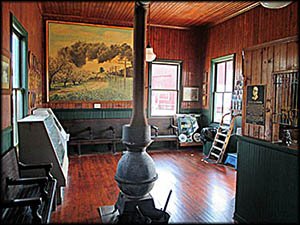
Baltimore & Ohio Railroad Watchman’s Shanty
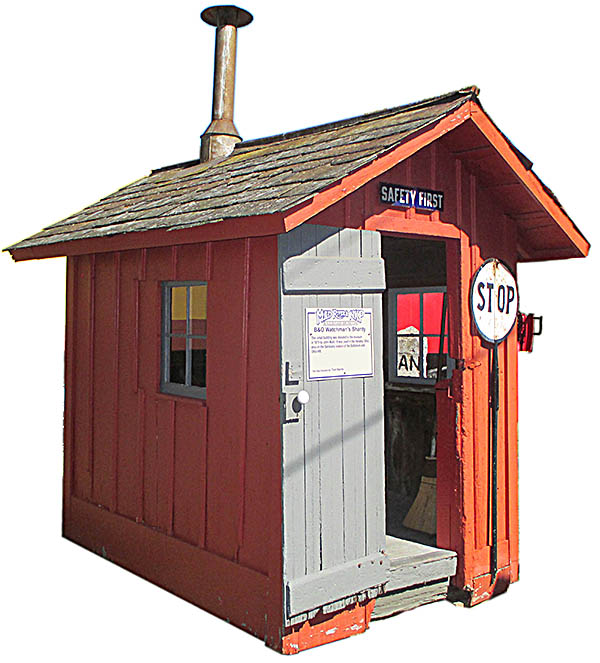
The museum is divided by two live tracks used by Norfolk Southern. You can’t enter any of the cars and engines on the far side of the tracks, but so far as I’m concerned, it was just as well because after a while they start looking the same. Which isn’t to say they weren’t interesting to go through; some contained artifacts and other museum exhibits. There are also two locomotives you can climb into, though I found them a bit disappointing: they were much sparser inside than I’d imagined. I took some photos of their interiors as well as a few shots through their windows, but the close space and small windows made these images poor specimens, which is why I didn’t post them here.
It took about an hour and half to cover everything. This is a must-see place for railroad enthusiasts. I can’t imagine anyone devotees being disappointed at what they see. I wasn’t. One important warning: don’t go an exceptionally hot day like I did. You’ll sweat you wazoo off, if not collapse from a heat stroke.🕜
It took about an hour and half to cover everything. This is a must-see place for railroad enthusiasts. I can’t imagine anyone devotees being disappointed at what they see. I wasn’t. One important warning: don’t go an exceptionally hot day like I did. You’ll sweat you wazoo off, if not collapse from a heat stroke.🕜
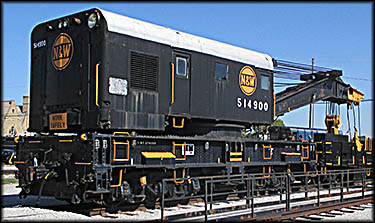
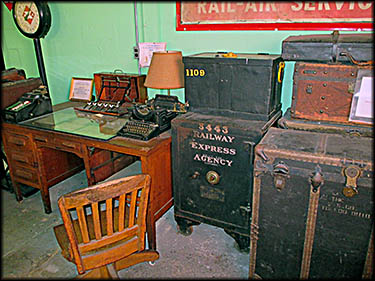
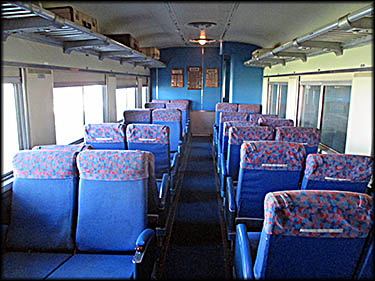
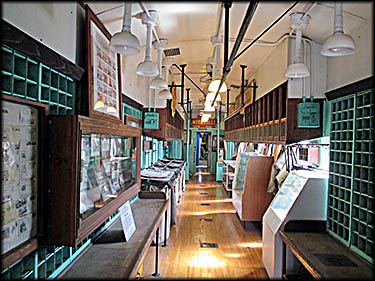
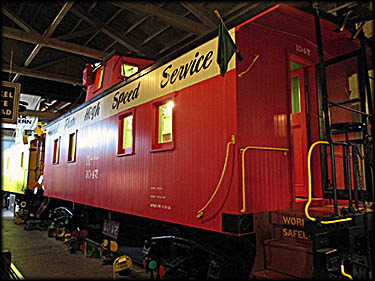
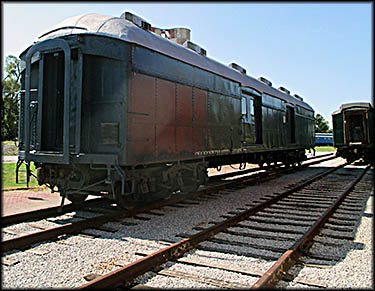
Track Laying Machine
